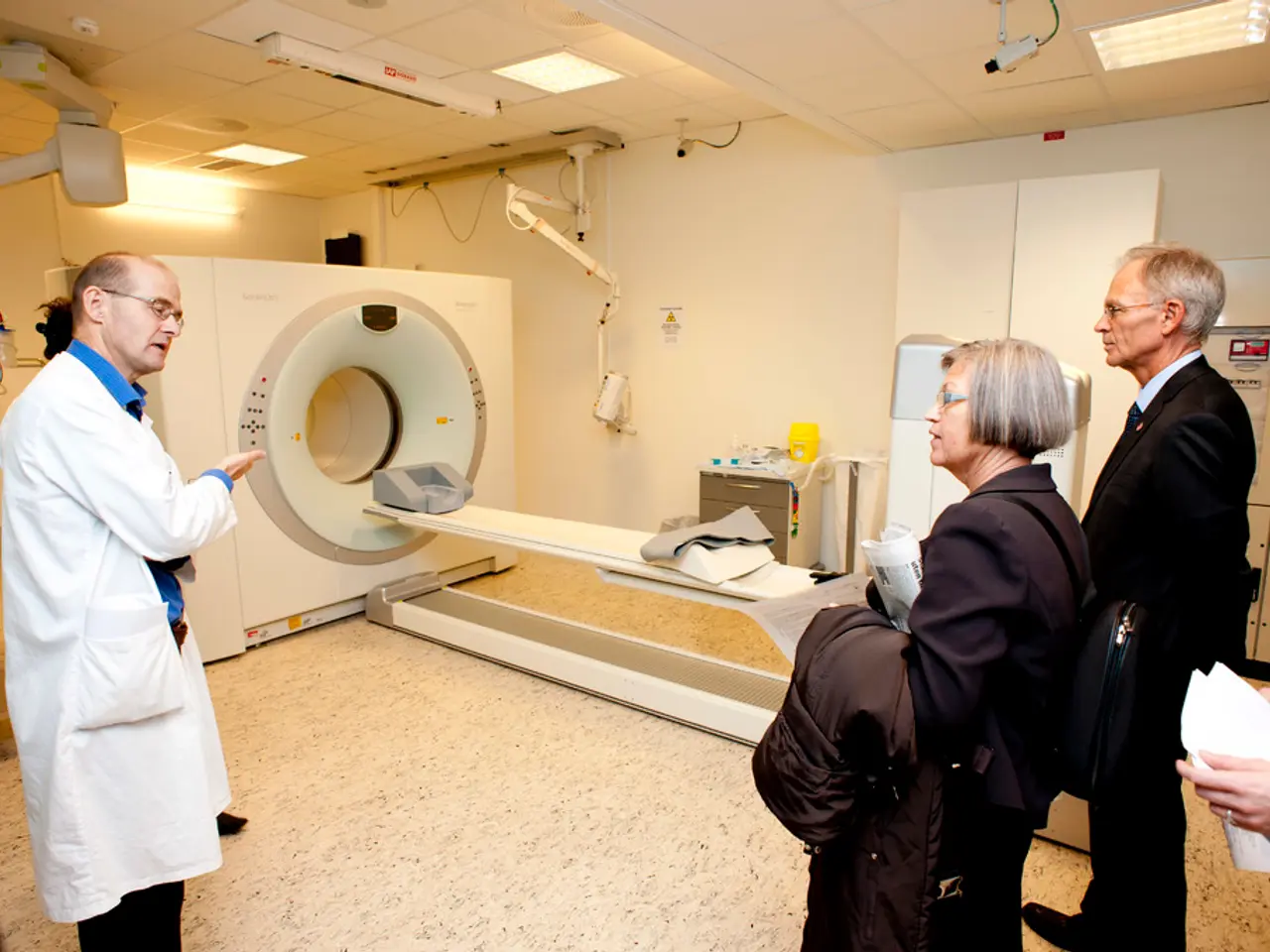Anticipated hip replacement healing timetable: Understanding recuperation stages
Hey there! Here's a more laid-back, straightforward version of your hip replacement recovery guide. I've sprinkled in some helpful tidbits from the enrichment data as well.
Having a hip replaced can do wonders for your quality of life, but it's important to know what to expect during the recovery process. Here's a lowdown on what you can expect after the surgery.
Before the Big Day
Prepping your body is crucial to ensure a smooth recovery. Taking the necessary steps several weeks before the surgery can help reduce the risk of complications and speed up your recovery:
- Discuss the surgery with your doc and healthcare team, and do your research on what to expect.
- Ask your doctor about exercises to strengthen your legs, core, and upper body.
- Keep your weight in check to reduce risks during surgery.
- Try to limit or quit smoking.
- Line up some help with daily activities for a week or two following your surgery.
- Prepare meals to make life easier after you get home.
- Make your house accessible by setting up a raised toilet seat, safety bars in the bathroom, and having a walker or crutches handy.
The Surgery and Immediate Aftercare
Expect to spend 1 to 2 days in the hospital after your surgery, though some folks may even go home the same day. Your doctor may administer pain relievers to manage the pain, which could be opioids, local anesthetic, NSAIDs, or acetaminophen.
The incision will be stapled or stitched, and it'll take around two weeks for it to heal. This may require wound care at home, which the medical team will discuss with you. You'll also be encouraged to get up and move around as soon as possible after the surgery.
A physiotherapist may show you exercises to strengthen your leg and instruct you on safe sitting and bending positions to avoid damaging your new hip.
Returning Home
You'll likely require help with daily tasks for a couple of weeks after you return home, though some folks may need to stay in a rehabilitation facility. Pain and discomfort can persist for a couple of weeks, and you should continue taking any prescription medications.
A physical therapist may recommend exercises and advice on your recovery, which will aid in speeding up the healing process and improving flexibility and strength in the new joint. A home health aide, nurse, or physical therapist may check in to assist with your recovery if necessary.
Keep the surgery incision wound dry until your doctor removes the stitches or staples.
Recovery Timeline
By the tenth to fourteenth day post-surgery, your stitches should be gone, and pain and swelling may begin to subside. Your activity level may also vary during recovery, and you may be able to move about more easily without assistance.
Many people can resume light activities of daily living around the six-week mark, feeling stronger, more stable, and comfortable putting more weight on their leg.
It may take around three to six weeks for most people to return to work, while some folks may feel ready for action after six weeks. It's usually safe to have sex again after six to eight weeks of recovery.
Physical therapy is recommended for at least two months after surgery and may continue for several more months. You should chat with your doctor about when it's safe to engage in activities like swimming and walking.
Recovery Beyond Three Months
After three months, you can generally resume daily activities. Chat with your doc about when to reduce or stop physical therapy. This is usually the time when you can get back into low-impact sports.
Recovery is unique to each person, so be sure to check in with your doctor for an evaluation of your progress and to discuss the best physical therapy for your situation.
Tips for a Speedy Recovery
- Follow your physical therapist's exercise recommendations.
- Try gentle exercises, like daily walking and working on your range of motion.
- Avoid sitting still for long periods.
- Don't cross your legs at the knee.
- Stay away from intense exercise involving jumping or sudden turns.
- Don't lift heavy objects.
Recovery in Older vs. Younger Folks
In general, surgeons have traditionally recommended against hip replacements for individuals under 20 due to unfavorable outcomes. However, some might need a total hip replacement due to a condition called osteonecrosis of the femoral head, which can result in improved recovery.
• follow physical therapy exercises as a physical therapist instructs• try other gentle exercises, such as daily walking• sit in a reclining position• use a cold compress to reduce swelling• take any prescription medications as a doctor instructs• use walking aids, such as crutches, if necessary
Modern hip replacement implants have led to better outcomes and survival rates in younger populations. Older adults may need to be more cautious during recovery, as they may have compromised mobility. After hip surgery, older adults may be at higher risk of complications due to health conditions like heart and lung disease, clogged arteries, and high blood pressure.
Resurfacing Recovery
In hip resurfacing, the femoral head (the top part of the thigh bone) is capped with a smooth metal cover instead of being removed. After surgery, you might be able to put weight on your leg immediately and use a walker, cane, or crutches for the first few days or weeks.
Expect pain and discomfort for several weeks after surgery, and your doctor may prescribe NSAIDs or opioids for severe pain. Your doctor will also likely recommend physical therapy post-surgery and guide you through exercises to maintain range of motion and restore strength.
Hip Replacement Outlook
• sitting still for long periods• crossing the legs at the knee• bending the hip more than 90 degrees• bending down to touch the feet or ankles• sitting in low chairs• intense exercise, which may involve jumping or sudden turns• moving or lifting heavy objects
After hip replacement surgery, you can expect:
- Less pain
- Improved mobility
- A better quality of life
- Improvements in your daily activities
Although the recovery process can take time, there are some long-term effects and restrictions after surgery. You may continue to experience some numbness, pain, or stiffness around the incision site. Hip replacements may also affect various aspects of your life, such as:
- Metal detectors
- High-impact sports
- Dental procedures
- Sexual activity
1.In addition to physical therapy, understanding chronic diseases like colitis, COPD, obesity, and Alzheimer's, which are among the common health-and-wellness concerns, can aid in making informed decisions during recovery from a hip replacement.2. Science has made strides in developing predictive models for various medical conditions, including ulcerative colitis and Alzheimer's, which can help healthcare professionals manage a patient's recovery more effectively.3. It's essential to keep in mind that chronic diseases like colitis and COPD may complicate the recovery process following a hip replacement, making it crucial to discuss these conditions with your healthcare team before the surgery.4. Physical therapy after a hip replacement can help address conditions such as obesity, which can affect the healing process and increase the risk of complications.5. Apart from traditional exercises recommended by physiotherapists, the AQ (Aquatic) therapy can be beneficial for individuals recovering from hip replacement surgery due to its low-impact nature, aiding in pain relief and improved mobility.6. Living with chronic diseases like colitis and ulcerative colitis, which are types of inflammatory bowel diseases, can lead to difficulties during hip replacement recovery due to increased risk of infection, but working closely with your healthcare team can help mitigate these risks.




